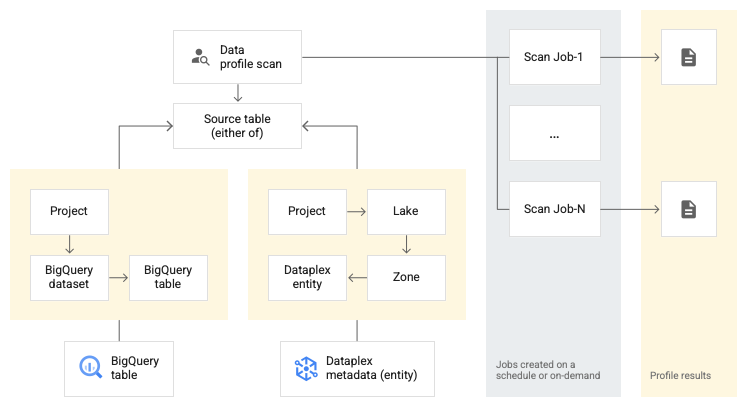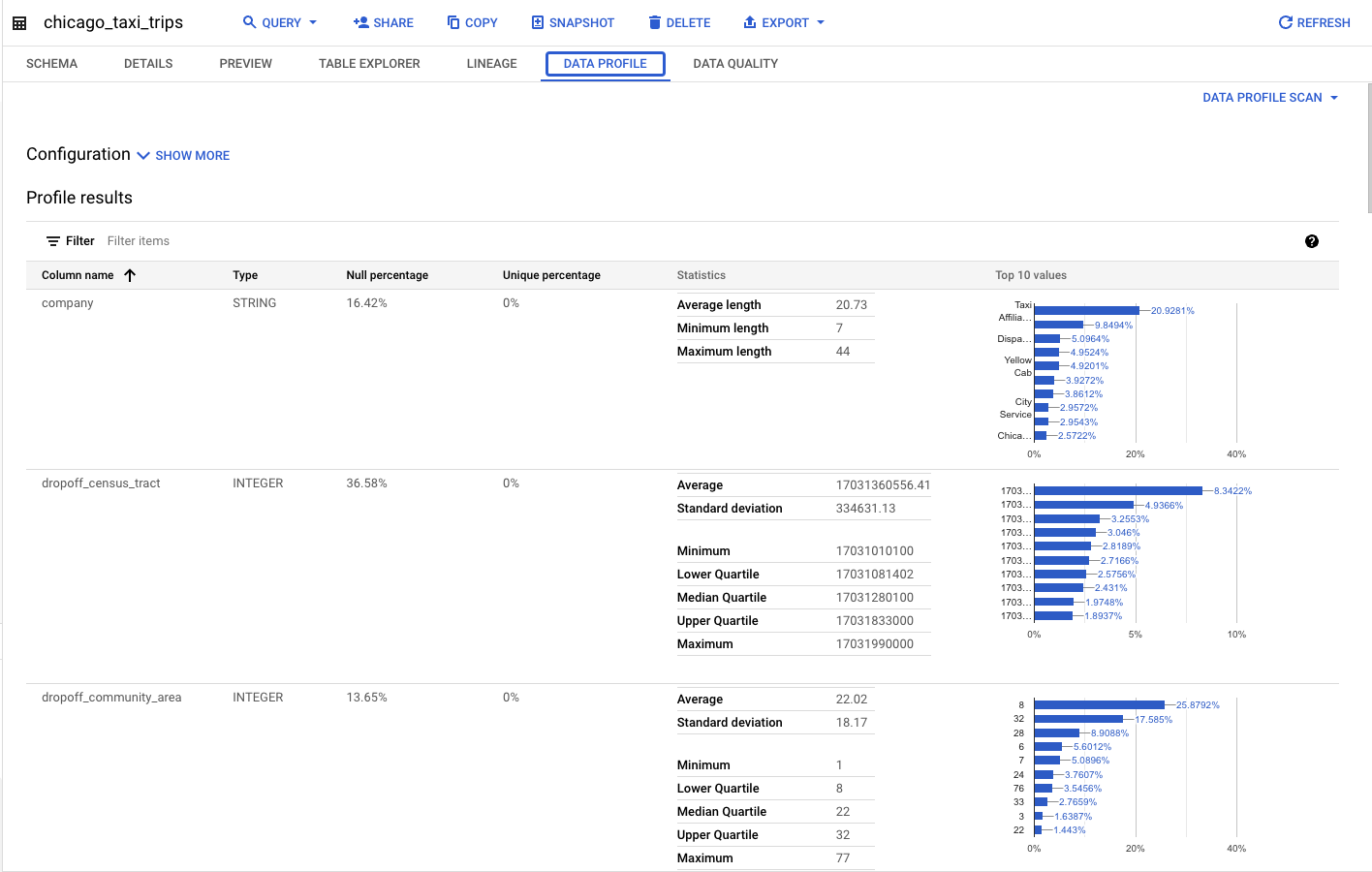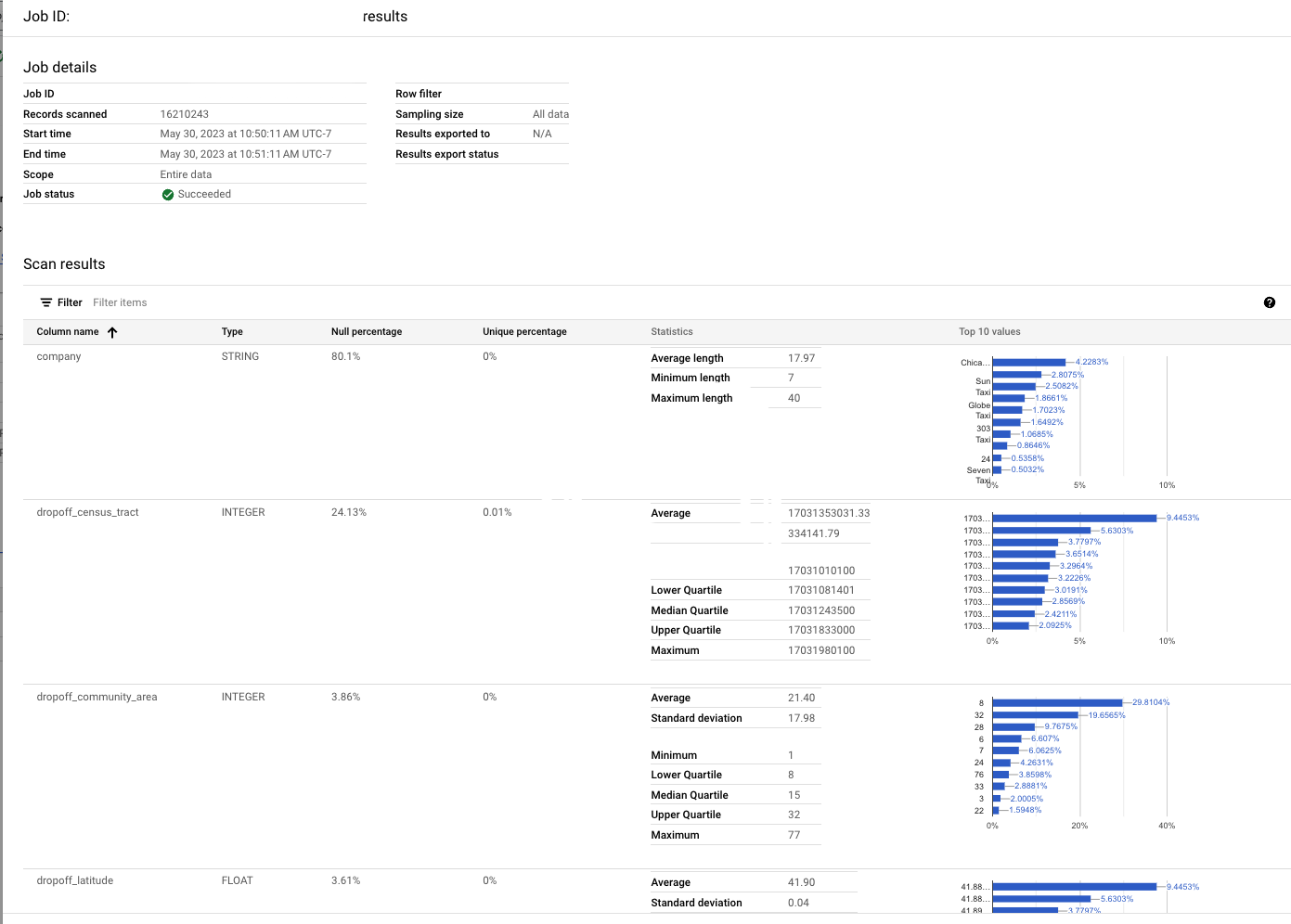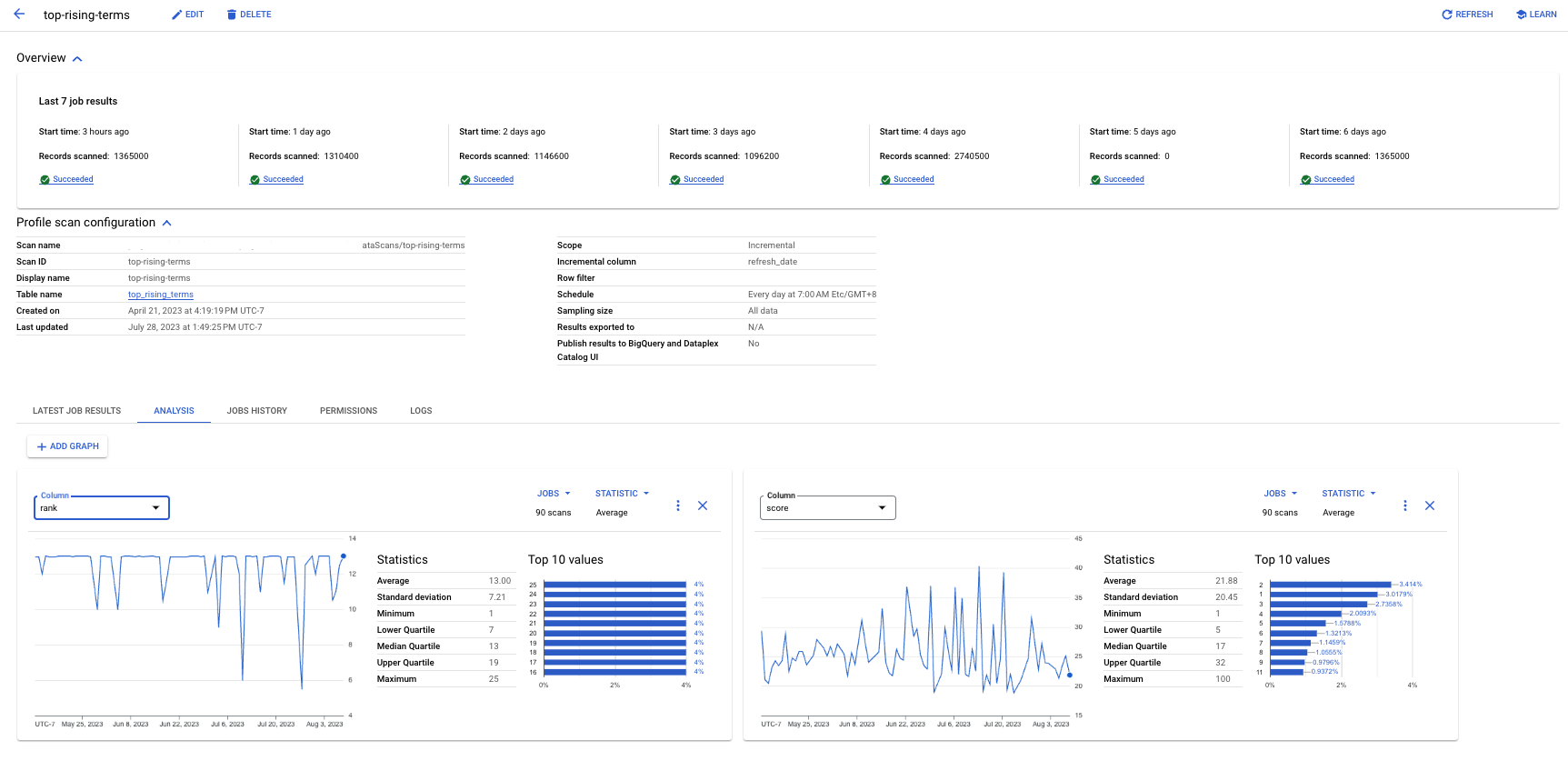Dataplex Universal Catalog makes it easier to understand and analyze your data by automatically profiling your BigQuery tables.
Profiling is like getting a detailed health report for your data. It gives you key statistics, such as common values, how the data is spread out (distribution), and how many entries are missing (null counts). This information speeds up your analysis.
Data profiling automatically detects sensitive information and lets you set access control policies. It recommends data quality check rules to ensure your data stays reliable.
Conceptual model
Dataplex Universal Catalog lets you better understand the profile of your data by creating a data profile scan.
The following diagram shows how Dataplex Universal Catalog scans data to report on statistical characteristics.

A data profile scan is associated with one BigQuery table and scans the table to generate the data profiling results. A data profile scan supports several configuration options.
Configuration options
This section describes the configuration options available for running data profile scans.
Scheduling options
You can schedule a data profile scan with a defined frequency, or run the scan on demand.
Scope
You can specify the scope of the data to scan:
Full table: The entire table is scanned in the data profile scan. Sampling, row filters, and column filters are applied on the entire table before calculating the profiling statistics.
Incremental: Incremental data that you specify is scanned in the data profile scan. Specify a
DateorTimestampcolumn in the table to be used as an increment. Typically, this is the column on which the table is partitioned. Sampling, row filters, and column filters are applied on the incremental data before calculating the profiling statistics.
Filter data
You can filter data to be scanned for profiling by using row filters and column filters. Using filters helps you reduce the run time and cost, and exclude sensitive and unuseful data.
Row filters: Row filters let you focus on data within a specific time period or from a specific segment, such as region. For example, you can filter out data with a timestamp before a certain date.
Column filters: Column filters lets you include and exclude specific columns from your table to run the data profile scan.
Sample data
You can specify a percentage of records from your data to sample for running a data profile scan. Creating data profile scans on a smaller sample of data can reduce the run time and cost of querying the entire dataset.
Multiple data profile scans
You can create multiple data profile scans at a time using the Google Cloud console. You can select up to 100 tables from one dataset and create a data profile scan for each dataset. For more information, see Create multiple data profile scans.
Export scan results to a BigQuery table
You can export the data profile scan results to a BigQuery table for further analysis. To customize reporting, you can connect the BigQuery table data to a Looker dashboard. You can build an aggregated report by using the same results table across multiple scans.
Data profiling results
The data profiling results include the following values:
| Column type | Data profiling results |
|---|---|
| Numeric column |
|
| String column |
|
| Other non-nested columns (date, time, timestamp, binary, etc.) |
|
| All other nested or complex data-type columns (such as Record, Array, JSON) or any column with repeated mode. |
|
The results include the number of records scanned in every job.
Reporting and monitoring
You can monitor and analyze the data profiling results using the following reports and methods:
Reports published with the source table in the BigQuery and Dataplex Universal Catalog pages
If you have configured a data profile scan to publish the results in the BigQuery and Dataplex Universal Catalog pages in the Google Cloud console, then you can view the latest data profile scan results on these pages, on the source table's Data profile tab, from any project.

Historical, per job report
On the Data profiling & quality > Data profile scan page in Dataplex Universal Catalog and BigQuery, you can view the detailed reports for the latest and historical jobs. This includes column-level profile information and the configuration that was used.

Analysis tab
On the Data profiling & quality > Data profile scan page in Dataplex Universal Catalog and BigQuery, you can use the Analysis tab to view the trends for a given statistic of a column over multiple profile jobs. For example, if you have an incremental scan, you can view how the average of a value has been trending over time.

Build your own dashboard or analytics
If you have configured a data profile scan to export results to a BigQuery table, then you can build your own dashboards using tools, such as Looker Studio.
Limitations
- Data profiling is supported for BigQuery tables with all column
types except
BIGNUMERIC. A scan created for a table with aBIGNUMERICcolumn results in a validation error and isn't successfully created.
Pricing
For more information about pricing, see Dataplex Universal Catalog pricing.
What's next?
- Learn how to use data profiling.
- Learn about auto data quality.
- Learn how to use auto data quality.
- Learn how to explore your data by generating data insights.
